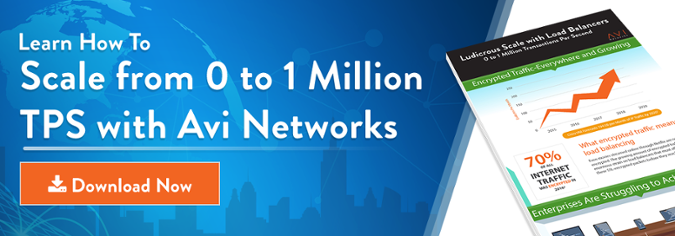What are “Elastic Application Services”?
Last year, Ranga Rajagopalan, our CTO wrote a very informational post on “Application Services 101” that has been referenced in many prospect/customer discussions ever since! If you haven’t read the post, I highly recommend you do.
Okay, assuming you read the post, with that understanding of application services, let us discuss why a load balancer, or fancily referred to as an application delivery controller (ADC) falls short for cloud-native application deployments.
Elastic Application Services Fabric
Multi-cloud deployments and modern application architectures need capabilities that go beyond load balancing. Simple things such as packet-in-packet-out for both north-south and east-west traffic requests, service discovery for routing the request to its right destination, capturing this real-time telemetry to intelligently autoscale the load-balancing or application instances (or even burst traffic to other clouds) become extremely complicated with traditional, appliance-based ADCs.
Why do I need an Elastic Application Services Fabric?
Goes Beyond Load Balancing
Network admins and application owners need capabilities such as autoscaling, elastic load balancing, application analytics, micro-segmentation, and application maps to ensure that resources mirror real-time traffic patterns. Traditional, appliance-based load balancing solutions are purpose built on proprietary hardware deliver the application delivery capabilities. However, the challenges of autoscaling, micro-segmentation, central control, multi-cloud load balancing, and application analytics still remain at large. With an “elastic application services fabric”, enterprise IT can use the real-time traffic telemetry for autoscaling resources (up or down) to match application traffic patterns or for cloud-bursting.
This is the premise of why we at Avi Networks built an elastic application services fabric that goes beyond application delivery.
Eliminates Over-Provisioning
A common problem with appliance-based load balancers is that they do not scale horizontally. The only way enterprises can scale these appliances is by purchasing more appliances (adding more hardware). This often results in configuration delays and overspending on expensive, custom hardware because enterprises over-provision to cater to peak usage. This dramatically increases the load-balancing investment. Avi’s elastic application services fabric leverages the insights derived from distributed load balancing resources across a multi-cloud environment. Telemetry from these distributed load balancers is used to predictively autoscale load balancers as well as application instances. Delivered as software-only, enterprises can eliminate upfront capital costs and adopt an elastic subscription-based model for load balancing that can automatically scale to match their traffic requirements.
Ludicrous Performance without Proprietary Hardware
Data center server manufacturers such as Intel led the standard hardware to breakthrough performance. Web-scale vendors such as Facebook, Google, etc. have moved to powerful software on standard hardware for increased agility while driving down hardware costs. Avi’s software-defined architecture enables on-demand elasticity with horizontal and vertical scaling to meet application traffic requirements. Enterprises can eliminate the need for proprietary hardware and replace this expense with high-performing software.
In fact, we at Avi quashed the myth that you will need proprietary appliances to achieve web-scale capability. The Avi platform scaled to 1 million SSL transactions per second to a single application and automatically scaled up services from zero to peak traffic in just 10 minutes and quickly scaled back down.
No “Lost Productivity”
Applications encounter a wide range of challenges related to performance, security, and availability when deployed in a multi-cloud, multi-network environment. This often translates into lost productivity and missed opportunities due to the inability to autoscale to meet traffic demand. The architectural differentiation enables Avi Networks to not only capture real-time metrics but also process these metrics in real time to present app insights in visual and actionable dashboards to the admins. Admins can configure autoscale policies (to handle peak traffic) or multi-tenancy (for dev and ops teams to publish apps faster).
While agility is a key benefit of software load balancing solutions, scalability without requiring additional hardware is another benefit of Avi elastic application services fabric.
Summary
Avi Networks delivers public-cloud-like agility for application services beyond load balancing including deep application analytics, predictive autoscaling, and security in the data center or public cloud. The Avi Vantage Platform delivers elastic, software-defined application services on commodity x86 servers, VMs or containers.
To learn more about if elastic application services are right for you, download our free whitepaper today!



